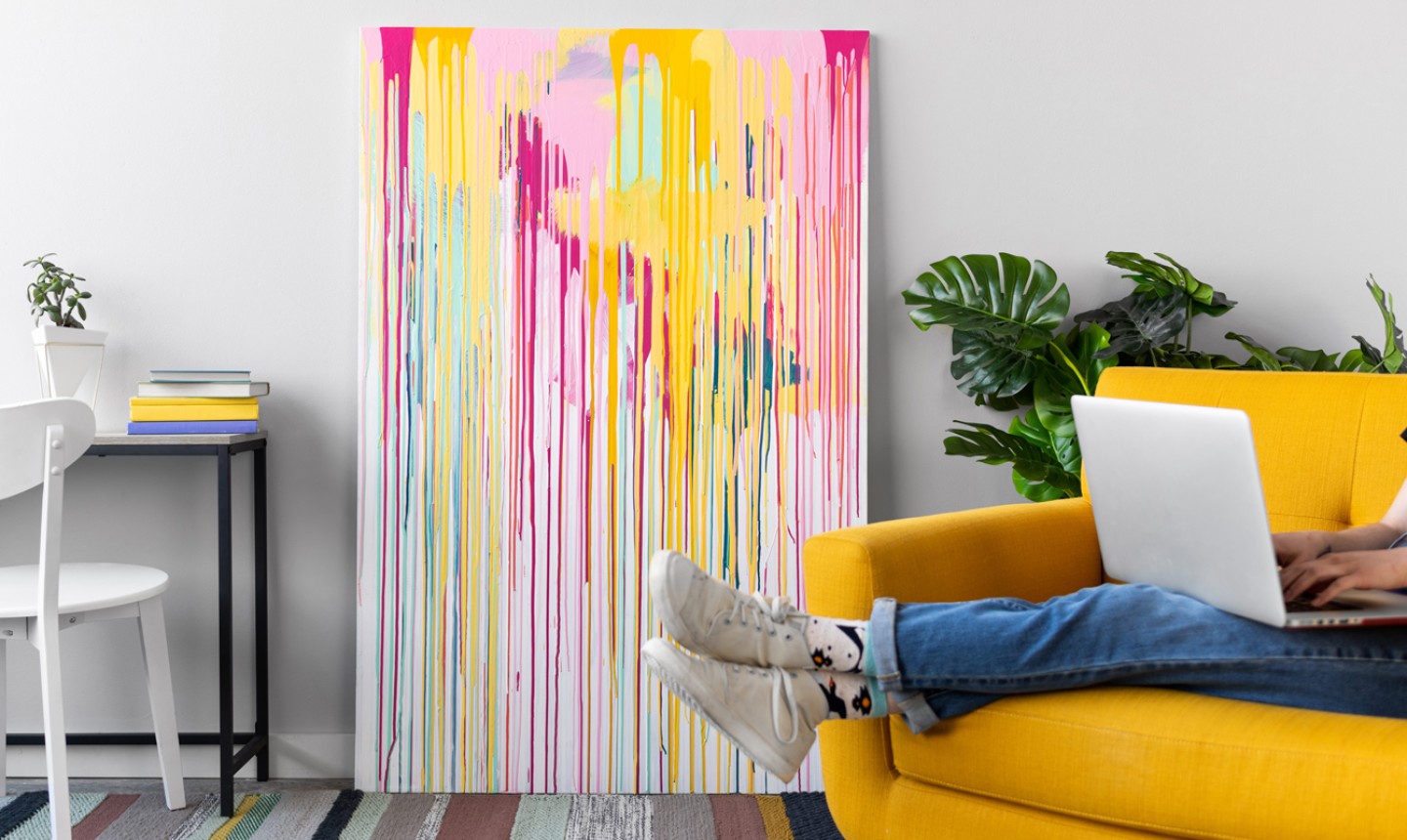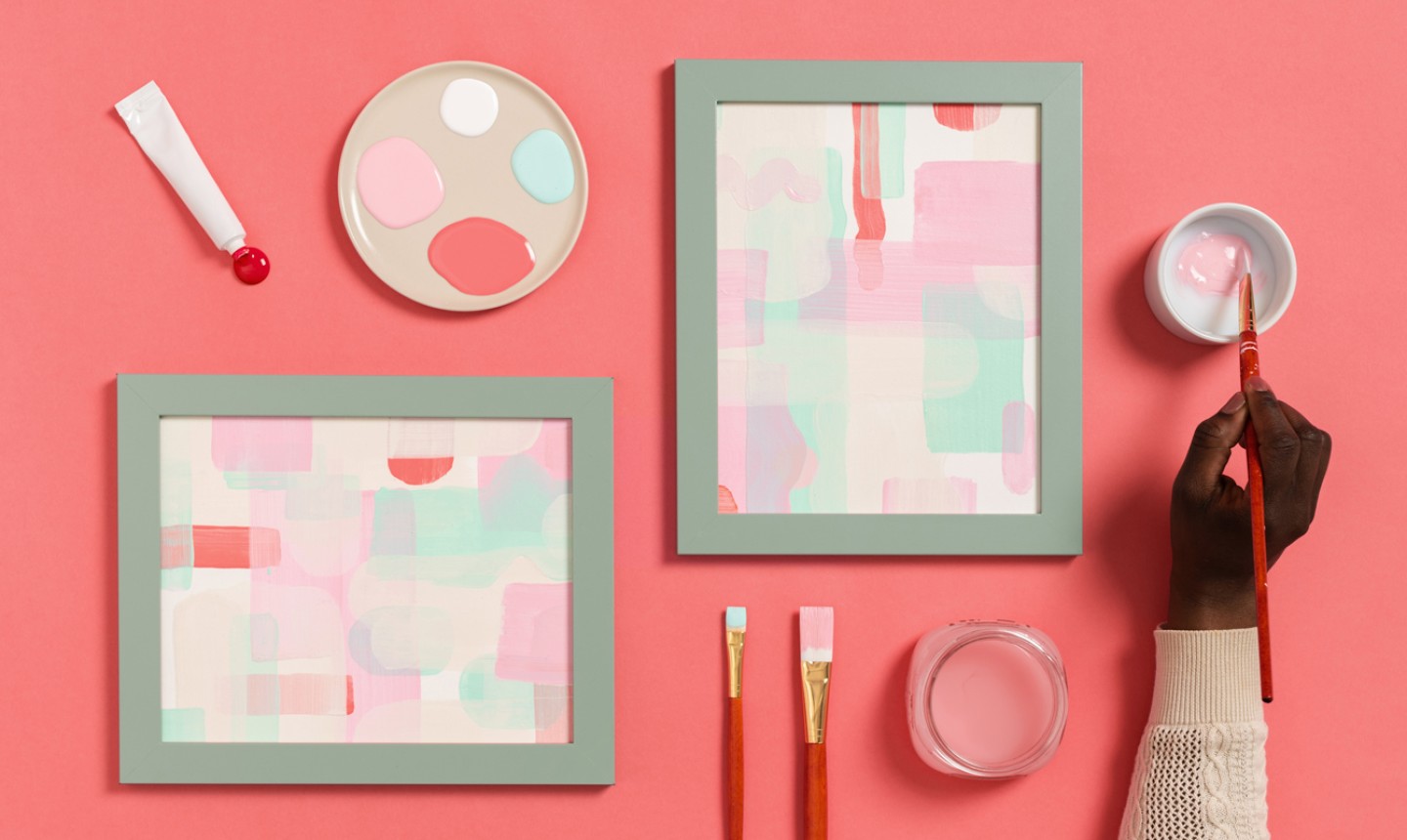
Sometimes when you’re working with acrylic, you want your paint to have a more liquid effect (like if you’re painting a water scene). Diluting acrylic paint in water isn’t necessarily the path: if you dilute beyond 50 percent, the paint won’t cover your substrate evenly or adhere well. That’s just frustration waiting to happen.
But there is a solution: fluid acrylic.
Just like regular acrylic, fluid acrylic works with paper, canvas and other types of surfaces. From pouring to dripping, fluid acrylic helps you do more with an already awesome medium.
1. Creating a Watercolor Effect

Fluid acrylic can look like watercolor paint, but (unlike watercolors) permanent. This makes techniques like layering much easier, as fluid acrylic paint won’t muddy or scrub off as easily as watercolor.
You can also add a flow-increasing medium (aka flow medium) to fluid acrylic, making it even more fluid. Flow medium also makes fluid acrylic extra absorbent — as the paint soaks into porous surfaces, it behaves even more like watercolor.
So, with the exception of lifting-off techniques, fluid acrylic can basically be used the same way as watercolor. You can paint washes, paint wet-on-dry, wet-on-wet, or layer colors. Cool, right?
2. Pouring

Pour fluid acrylic directly on your substrate — no brush needed. You can use this technique for your next project, begin an abstract piece, or start a work that explores negative painting techniques.
Some Pouring Tips
3. Glazing

Glazing involves painting semi-transparent layers of color. Fluid acrylics are very well suited for this technique, as they can be easily combined with gel medium to produce a homogeneous, semi-translucent mix.
Because of its consistency, fluid acrylic makes it easy to obtain an even wash, without any brushstroke or thickness showing on the surface of the canvas or paper. So consider this type of paint your go-to for the bottom layer of color in a painting where you don’t want visible brushstrokes.
4. Dripping

If drip art is your jam, you’ll love fluid acrylic. It’s already so easy to get this effect, and adding flow medium to the paint will produce even thinner drips. Add paint to the top of your canvas and tilt it so the pigment runs. For more control, try using a liquid dropper.
I'd love to see a class on fluid acrylics.
I'm glad to know about Fluid Acrylics. I didn't know the difference. I am going to have to try it. Thank you for the information.
thank you for the comment
What are the quantities of paint to water, pouring fluid etc to get the correct consistency for pouring?